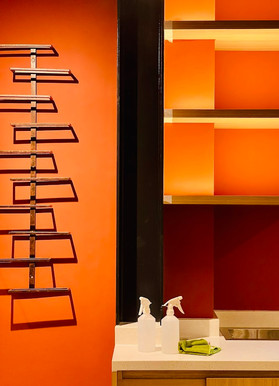Exploring Light and Shadow in Interior Spaces
- circular connection
- Sep 27, 2024
- 2 min read
Light and shadow play a crucial role in shaping the atmosphere and perception of interior spaces.
Images: ArchDaily/Ramitha Watareka, HW Homeworks
Designers often leverage these elements to influence how a room feels, using light to create openness or intimacy, while shadow introduces contrast and texture. Whether through natural or artificial sources, the interplay between light and shadow brings depth and visual interest, enhancing the overall experience of a space.
Images: HW Homeworks, James Schaeffler
Signages are an excellent example of how light and shadow can be combined to elevate both form and function. Backlit signs, neon lights, and even minimalist LED strips create focal points in a room, while the shadows they cast add layers of complexity. By strategically positioning light sources behind or around signage, designers can create a halo effect, giving a sense of dimension and highlighting key areas. This approach is especially effective in retail spaces, restaurants, or art installations, where attention is often drawn through the creative use of light.
Images: HW Homeworks
In addition to signages, interior features like textured walls, architectural details, or statement furniture can benefit significantly from intentional lighting design. When light hits textured surfaces, the resulting shadows bring out the subtle intricacies of the material, making features like brick walls, patterned ceilings, or sculptural pieces stand out. Shadows can also shift throughout the day, particularly when natural light is involved, altering the mood of the space and adding a dynamic, ever-changing quality.

Image: Tom Raffield
Ultimately, exploring the relationship between light and shadow in interiors allows for greater flexibility in setting the tone and functionality of a space. By understanding how these elements work together, designers can create atmospheres that are not only visually striking but also functional, comfortable, and adaptable to different needs or times of day.
Thoughtful lighting design can turn ordinary rooms into captivating environments, offering both practical illumination and artistic expression.


















